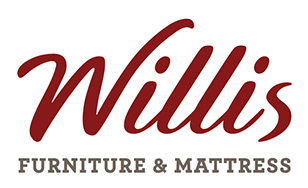
Leather is one of man’s earliest and most useful discoveries. Our ancestors used leather to protect themselves from the elements. Primitive man hunted wild animals for food, then made clothing, footwear and crude tents from the hides. Like then, hides used today are a by-product of the meat industry. Animals are raised for the meat, dairy and wool industries, not for their hides. Isn’t it amazing that we can take what is essentially a waste product and make it a useful and beautiful material?
Due to its durability and comfort, leather has been used for seating throughout the history of transportation and furniture. It has always been the ideal material for making saddles and tack, as well as footwear. During the Middle Ages, leather became the cover of choice for dining chairs, because it was easy to maintain and did not absorb the odor of food – a fact that is still true today. All leathers are not created equal. Learning a few key facts about how it’s made will tell you a lot about the quality of leather upholstery and how it will wear over time.
Full-Grain vs. Top-Grain
Full-grain and top-grain are two terms that refer to what section of the hide the leather comes from and how it is processed.
Full Grain
Full-grain leather is taken from the outermost section of the hide and is the most sought-after leather for its durability and character.
- Top grain leather hides that have not been altered or corrected in order to remove imperfections. Only the hair has been removed from the epidermis.
- The grain remains in its natural state, which will allow for the best fiber strength and greater durability.
- Natural full-grain surface will wear better than any other leather. It will develop a natural patina and change its appearance over time.
- Full grain leathers can be bought as two finish types: aniline and semi-aniline.
Top Grain - Refers to the upper section of a hide that contains the epidermis or skin layer. Confusingly enough, top-grain leather does not actually reflect the “top” (the outermost section) grain of the hide it was taken from. Top grain leather is usually sanded down to remove any imperfections and then imprinted with imitation grain to give it a more uniform look.
- Top grain leather has its surface sanded, buffed, or snuffed in order to remove any imperfections on the surface due to insect bites, healed scars or brands.
- The hides used to create corrected leather are hides of inferior quality that do not meet high standards for use in creating aniline or semi-aniline leather.
- The imperfections are corrected, and an artificial grain can be applied. A pattern is stamped into the surface of the leather to create visual appeal or to hide unwanted characteristics. (embossed leather or printed leather)
- Corrected grain leathers can be bought as two finish types: semi-aniline and pigmented.
Aniline – bi-product of the petroleum industry. Pigments are added to the aniline to achieve the desired color. Aniline dyes are then mixed with the hides to color them.
- Full Aniline – leather hides fully dyed using aniline dyes. Typically, most full anilines have no form of protection add to the surface. AKA – naked leathers, natural leathers.
- Semi-Aniline – leather hides that are (typically) fully aniline dyed first, and then a colored surface coat is applied. AKA – aniline plus, protected leather, pigmented leathers, painted leather.
For more tips on leather check out our "Caring for Your New Leather" blog post.

